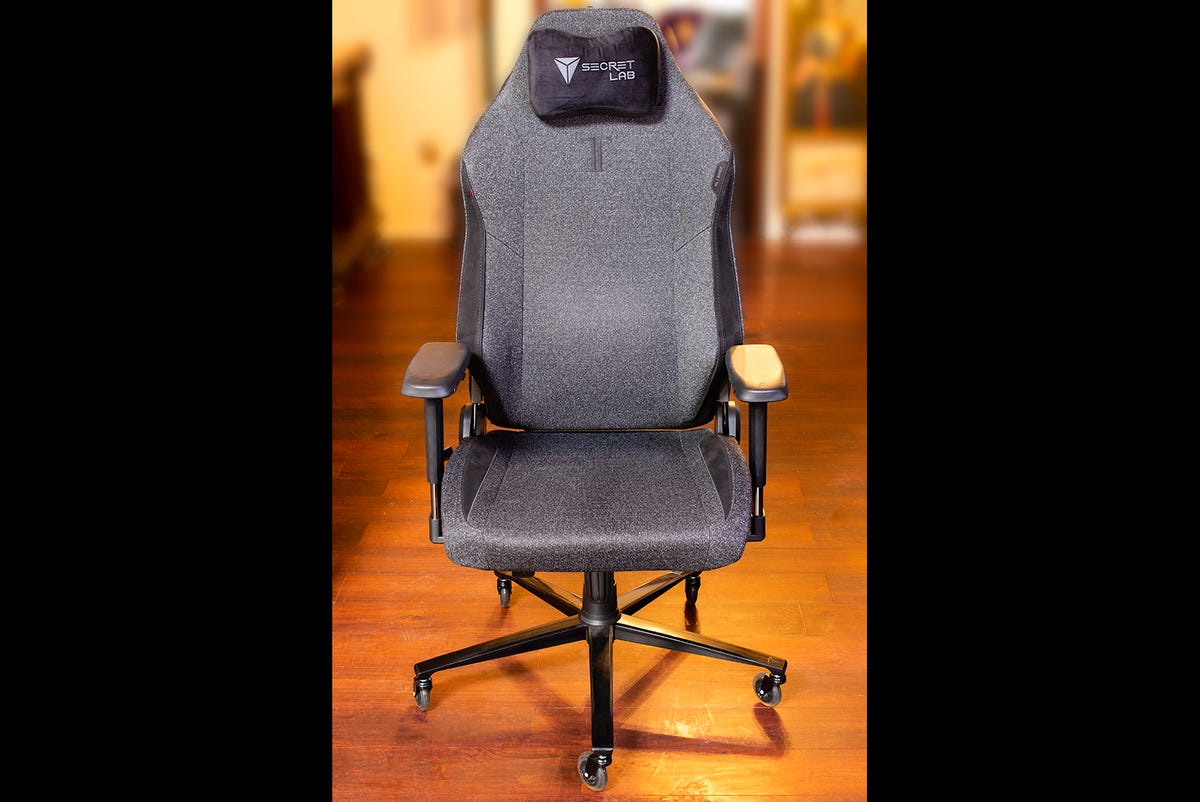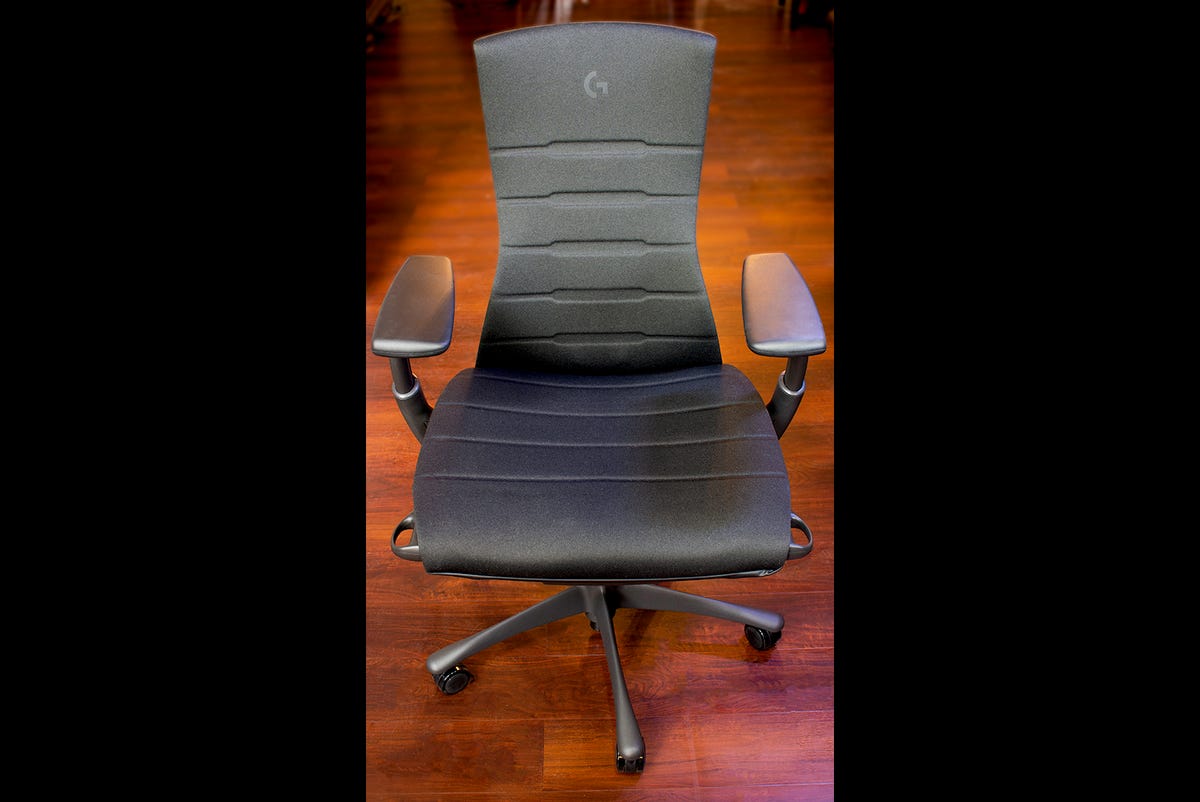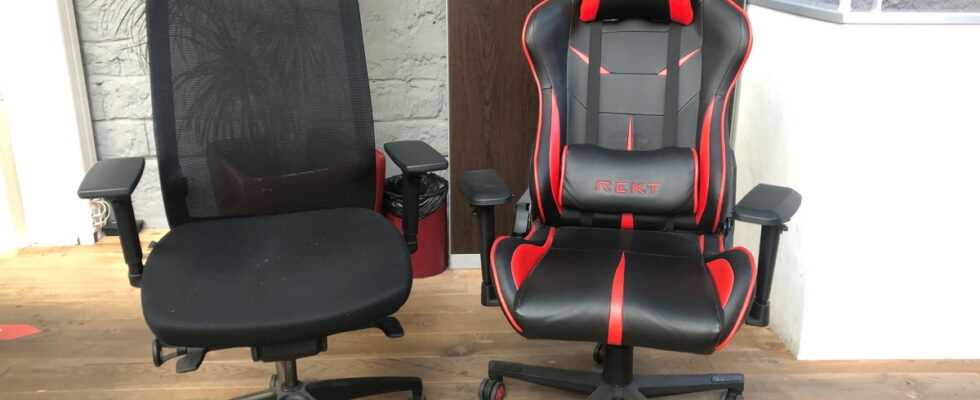You might be wondering why the differentiation between office chairs/chairs and gaming chairs/chairs is so important. After all, an office chair won’t throw you off if you try it to play a video game. And neither should a gaming chair, if you feel responsible enough to work there. But, for some buyers and many manufacturers, the differentiation seems important.
To understand why this has become the case, you need to know some of the characteristics that define each category. Unfortunately, this is an increasingly difficult task. While the lines between gaming and office work were originally very clear, they have blurred over the years, with each side continually borrowing from the other when a new feature appeared and their own customers could find it. useful. The result is a nebulous situation in which it’s harder to tell what actually makes a chair a gaming or office accessory – apart from the advertising that accompanies it, of course.
With all of that in mind, we’re going to dive into listing the unique features each product offers, the features you should prioritize when choosing a seat, and whether or not it all really matters. importance.

A mid-priced desk chair that I’ve had for years that has seen thousands of hours of writing…and just as many hours of gaming. Image: Michael Gariffo.
What defines an office chair?
Let’s start with the oldest product. Working at a desk… it existed long before the invention of video games. In their modern incarnations, most office chairs share several characteristics: they are usually mounted on casters, most have one or more adjustments to better suit each user, and they are usually padded, although the form that this padding takes can vary considerably.
Their overall purpose is, as you might expect, to help the person sitting in them work. They do this by providing a comfortable seated position for working at a desk while answering the phone, entertaining visitors, or typing on a keyboard all day.
That is just about everything. Everything else about an office chair’s features is so variable that it would take a multi-page list just to cover a fraction of the possibilities. They range in cost from less than $100 to several thousand dollars, with materials and designs diverging even more than this price gap suggests. Basically, if it’s something you can sit in and work at a desk, it’s probably an office chair. Unless, of course, it’s a gaming chair.

A Secret Lab TITAN Evo chair that I recently purchased for gaming. It is also excellent for working. Picture: Michael Gariffo.
What defines a gaming chair?
Like office chairs, most gaming chairs have casters, usually include armrests, have a variable number of adjustments, and can be used near or away from a desk for gaming. games on a console or PC. It might surprise you, but they can also be used on the same desk for working, doing homework, or whatever their office counterparts can do.
Their aesthetic is on the other hand more “playful”. While office chairs generally present a very professional look, gaming chairs were historically created to appeal to a younger, less stuffy audience. So there are more vibrant and varied colors, color contrasts, and a form factor that generally, but not universally, resembles a seat ripped from a race car.
Still, even this caricature has become less true as the product category has continued to diversify. Still, anything that continues to match at least two of the characteristics I mentioned above is most likely designed for a gaming audience.

A Herman Miller Embody gaming chair, which is almost 100% identical to the standard Embody office chair. Picture: Michael Gariffo.
So what’s the real difference?
It’s simple, there are fewer and fewer differences. Take for example the movable armrests, originally found only on gaming chairs. About ten years ago, the latter boasted of offering the user a setting far superior to that of their desktop counterparts. While most office chairs of the time had rigid or, at best, height-adjustable armrests, gaming chair armrests could be adjusted for height, width, depth, and even rotation. The idea was to give gamers’ arms a comfortable resting position, whether they’re playing with a mouse and keyboard or using a console controller.
For several years, this feature remained almost exclusively reserved for gaming chairs. Then, office chair manufacturers began to take notice and realize that these additional adjustments could be just as useful to receptionists, office workers, nurses, guest service personnel and anyone who cares. had enough of stiff armrests that barely supported their elbows when typing.
This “inspiration” was not one-sided. As gaming chairs have grown in popularity, their detractors have seemed to coalesce around the category’s lack of ergonomics, with the complete lack of lumbar support being a major criticism. Many manufacturers’ short-term solution was to simply add a pillow to their chairs to compensate.
But, over time, more and more gaming chair manufacturers began to include built-in, adjustable lumbar support systems, just like office chairs. Today, two of the leading manufacturers of gaming chairs, Razer and Secret Lab, both have adjustable lumbar systems in their respective flagship lines.
Secret Lab even makes a chair that doesn’t need to be fully upholstered and uses mesh instead, which is a first for Secret Lab.
Yes, the Herman Miller Embody, one of the most iconic office chairs ever made, is available in a gaming edition. But you wonder what Herman Miller changed to make it a gaming chair? The brand designed it in black instead of grey. That is just about everything. If one of the most high-end office furniture manufacturers in the world doesn’t really see a difference between what makes a good office chair and what makes a good gaming chair, why should we fight to maintain intact this division more and more useless?
So which is the best chair for me, the gamer, or for me, the pro?
We should all ask ourselves this question. Especially when you belong to both categories, depending on the time of day.
The answer is: one or the other. Rather than figuring out what kind of customer a chair is for, focus entirely on the benefits the product offers to you and your specific needs.
Do you use a single chair to work from home during the day, play FPS games in the evening, and take an occasional nap on the weekends? Consider an ergonomic, low-profile gaming chair with a headrest and a large recline.
Are you more interested in the ergonomics of the chair, but want it to be flexible enough to use in front of the TV? Take a look at the many office chairs designed in collaboration with medical professionals, which also feature adjustable armrests and premium support for all your console and PC games.
In fact, what matters when it comes to finding the best chair is less where it comes from and more about the features that matter most to you. Compare these characteristics with your needs, and adapt according to your budget when you have found the ideal combination.
What are the best chairs of each “camp”?
This article was not intended as an exhaustive list of specific products. Rather, it was created to help you understand that how these products are marketed is less important than how their specific features actually work for you. Focus on things like what type of fabric or mesh feels most comfortable, what type of arm best suits the type of game or work you do, and what type of aesthetic suits your home and your potential video chat needs.
If you’re a serious buyer, I highly recommend checking out ZDNet’s many buying guides on the subject.
I also invite you to check out our reviews of many of the best chairs and other popular office and gaming furniture, linked below. Each one includes best-in-class options, and a solution for you, whether you’re a hard worker or an avid gamer.
If I had to give one piece of advice on the battle between gaming chairs and office chairs, it would be this: ignore the labels. Your comfort and aesthetics are the only things that matter. Look for a chair that takes this into account, not one that cares primarily about the demographic label that its marketing department would like to stick on you.
To go further on the question of office chairs
Source: ZDNet.com
